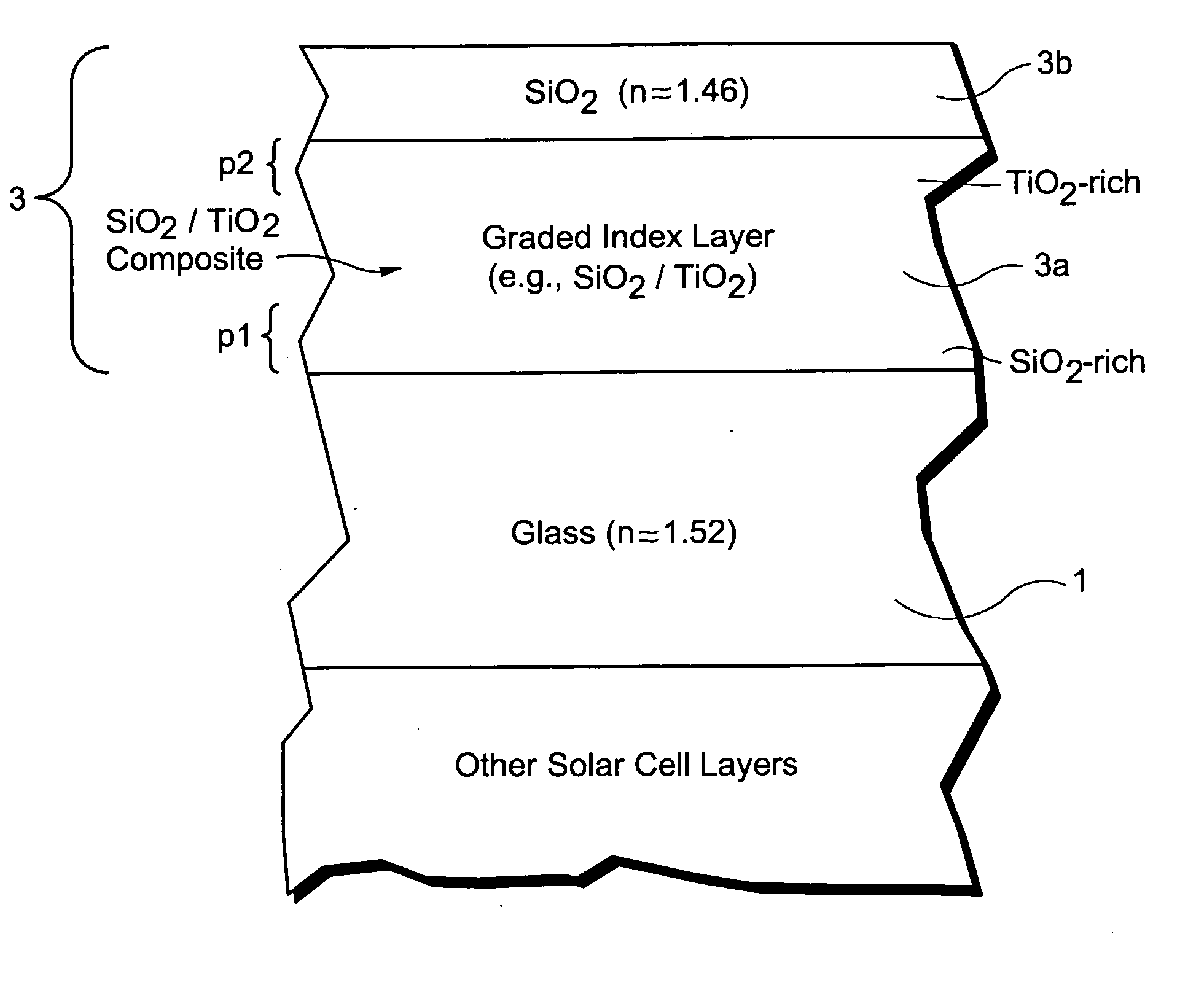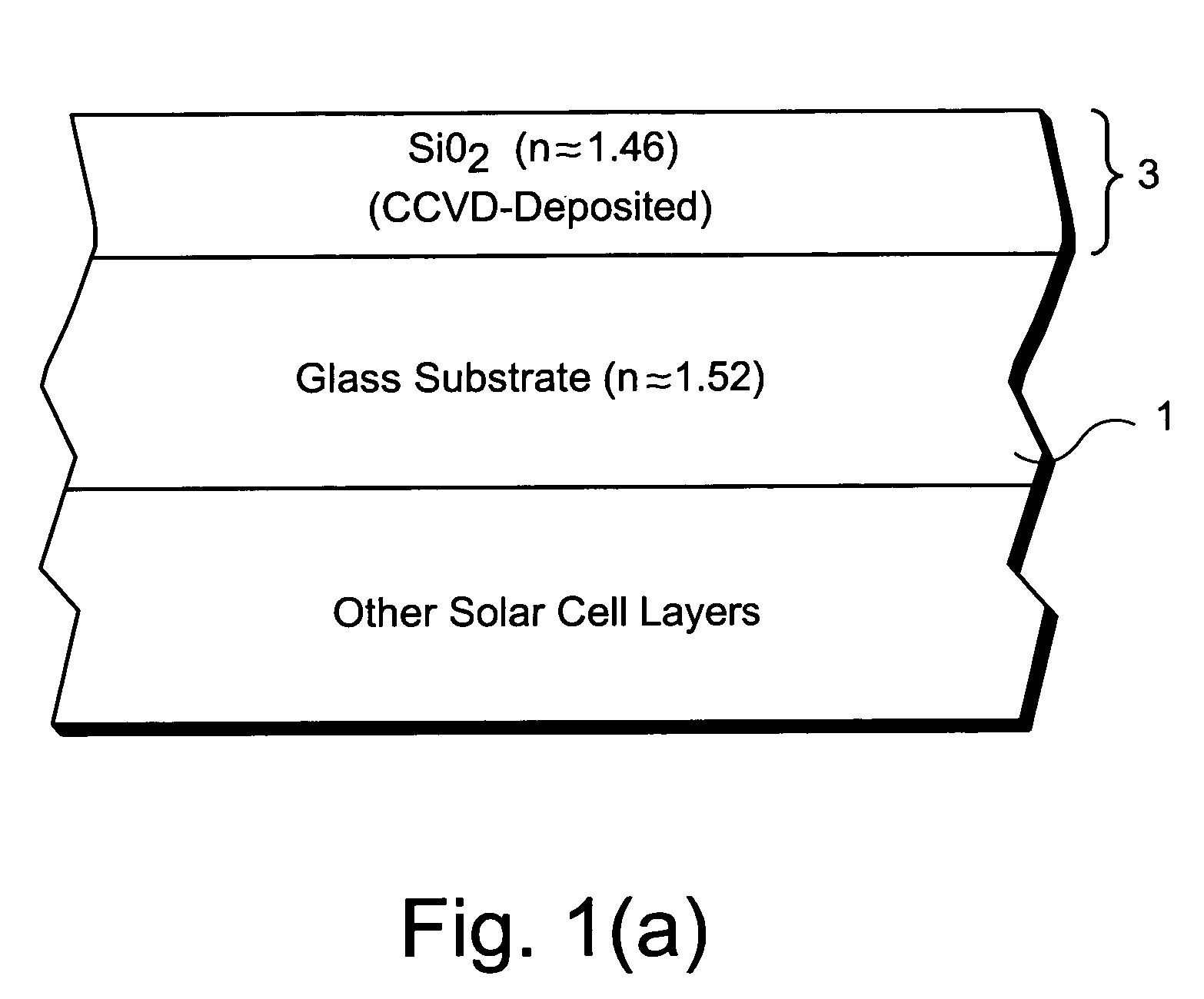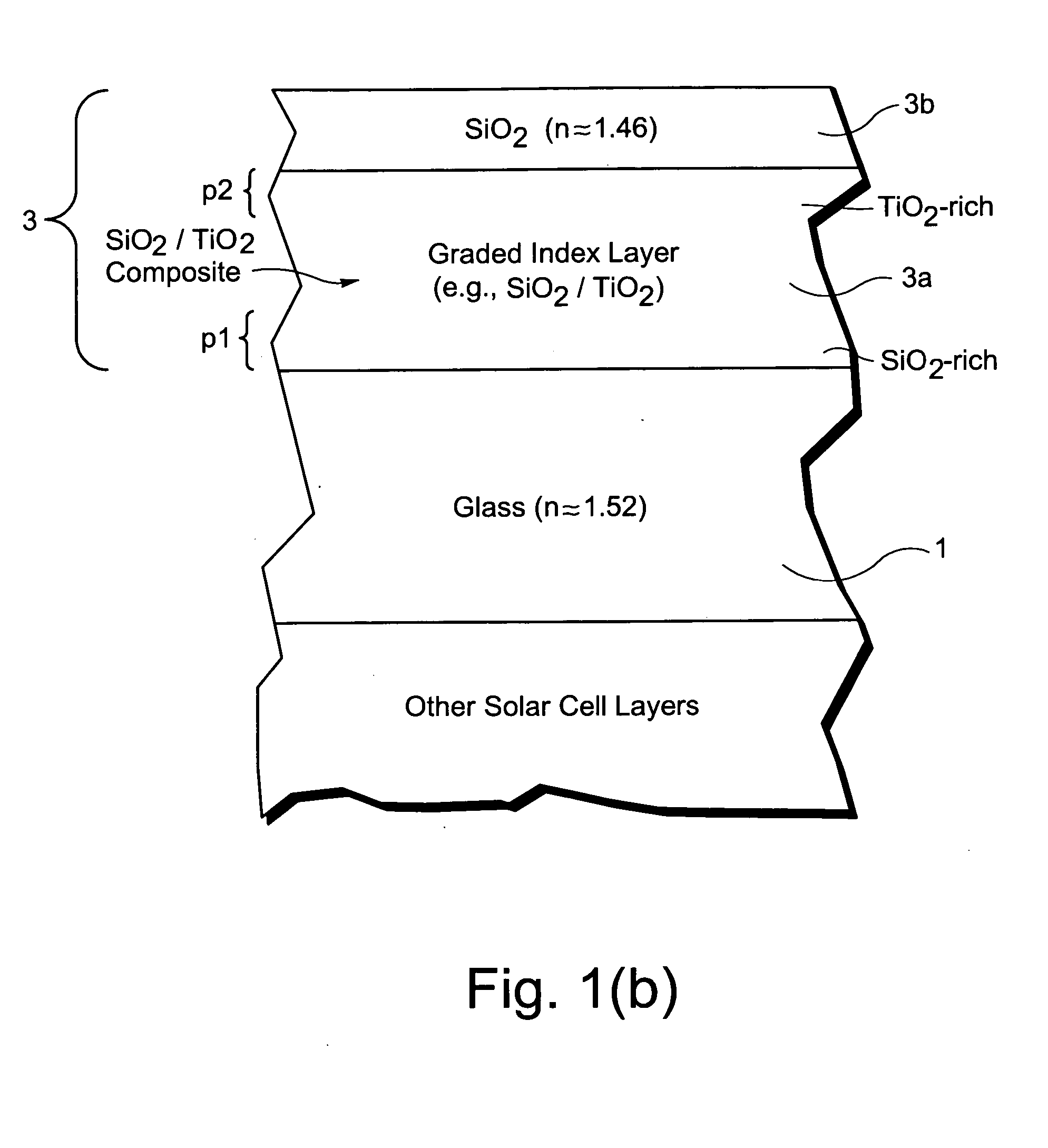Method of making solar cell with antireflective coating using combustion chemical vapor deposition (CCVD) and corresponding product
a solar cell and anti-reflection technology, which is applied in the direction of pv power plants, generators/motors, light radiation electric generators, etc., can solve the problems of less efficient solar cells, achieve improved anti-reflection (ar) coating, reduce light reflection, and improve efficiency
- Summary
- Abstract
- Description
- Claims
- Application Information
AI Technical Summary
Benefits of technology
Problems solved by technology
Method used
Image
Examples
Embodiment Construction
[0008] In certain example embodiments of this invention, an improved anti-reflection (AR) coating is provided on an incident glass substrate of a solar cell or the like, and a method of making the same. This AR coating functions to reduce reflection of light from the glass substrate, thereby allowing more light within the solar spectrum to pass through the incident glass substrate and reach the photovoltaic semiconductor so that the solar cell can be more efficient. In certain example embodiments, the AR coating is formed on the glass substrate via flame pyrolysis (a type of combustion chemical vapor deposition (CCVD)). When the flame pyrolysis deposited AR coating is used in combination with a high transmission low-iron light incident glass, the advantages are especially significant.
[0009] The flame-pyrolysis-deposited AR coating may include or be of, a layer of or including silicon oxide (e.g., SiO2) on a glass substrate (directly or indirectly with other layer(s) therebetween) i...
PUM
| Property | Measurement | Unit |
|---|---|---|
| refractive index | aaaaa | aaaaa |
| refractive index | aaaaa | aaaaa |
| refractive index | aaaaa | aaaaa |
Abstract
Description
Claims
Application Information
 Login to View More
Login to View More - R&D
- Intellectual Property
- Life Sciences
- Materials
- Tech Scout
- Unparalleled Data Quality
- Higher Quality Content
- 60% Fewer Hallucinations
Browse by: Latest US Patents, China's latest patents, Technical Efficacy Thesaurus, Application Domain, Technology Topic, Popular Technical Reports.
© 2025 PatSnap. All rights reserved.Legal|Privacy policy|Modern Slavery Act Transparency Statement|Sitemap|About US| Contact US: help@patsnap.com



